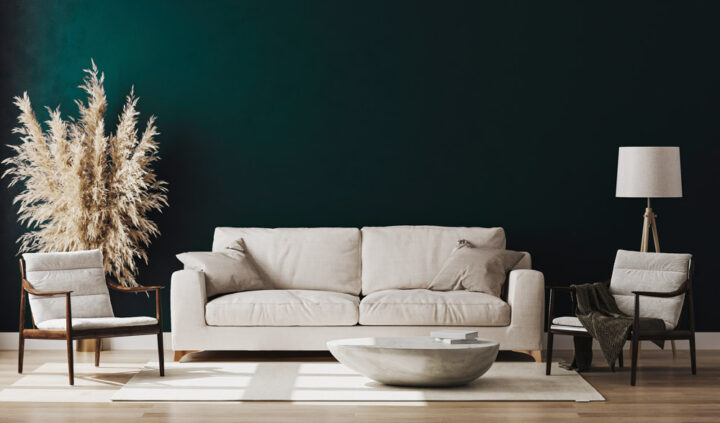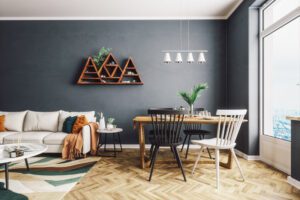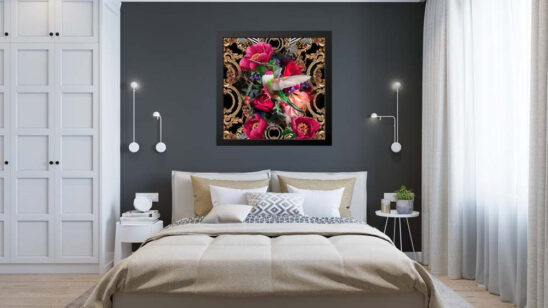
The dark side
Looking for a wintry interior update? Swap white walls for dark moody hues for the perfect cosy transformation.

Going to the dark side can feel intimidating, but dark schemes are a great backdrop for furniture and art and can create a warm, inviting space. Dark shades add drama and grandeur to a home, and heading into the colder months is the perfect time to give them a go. If you are not sure where to start, here are a few tips.
From nature
When you first think of dark interior design, perhaps you go to very harsh colors like black and charcoal, or deep navy blue. Moodier interiors aren’t all about those striking cooler tones. For a softer feel, look to the warmer side of the colour wheel, and experiment with hues that have a more natural, earthy feel. Deep greens and browns are a great place to start.
Check undertones
If you want to experiment with black paint, be sure to pay attention to the shades you pick and look very carefully at the undertones. A lot of black paints have a blue undertone which is great if you don’t mind a slightly cooler colour, but for a warmer, softer look, try and source blacks that have a brown undertone.
Create contrast
With dark colours, it is important to create contrast as well as a sense of balance. A mix of materials is essential, so choose different textures in your fabrics and surfaces. Some items will pop against a dark background, so go for a mixture of light and bold colours in furniture and accessories to bring it all together.
Go matte
Dark hues and matte finishes are a dream team. Opting for matte paint softens the overall look, making moodier hues feel less harsh and cosier. It also is the perfect finish for all surfaces so you can blend features together to achieve a seamless, velvety look.
Look up
Ceilings have long been ignored when it comes to colour and pattern, often left in a white or beige, so as not to stand out or clash. However, the fifth wall can add dimension and depth to a room, whether that’s with paint or wallpaper. Painting the ceiling the same colour as the walls is a great way to make a smaller space feel bigger, as it is hard to tell where the walls stop and the ceiling begins.



